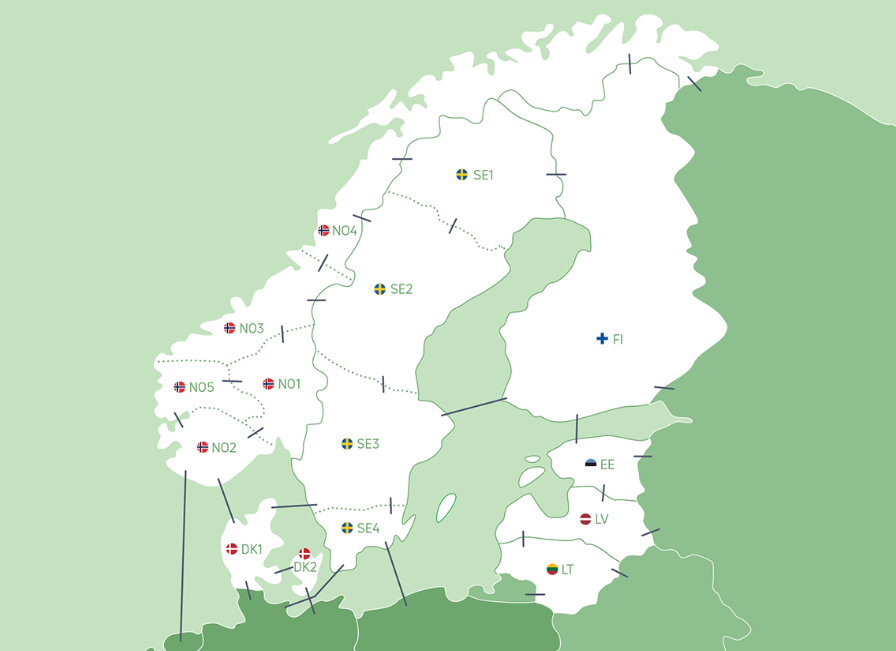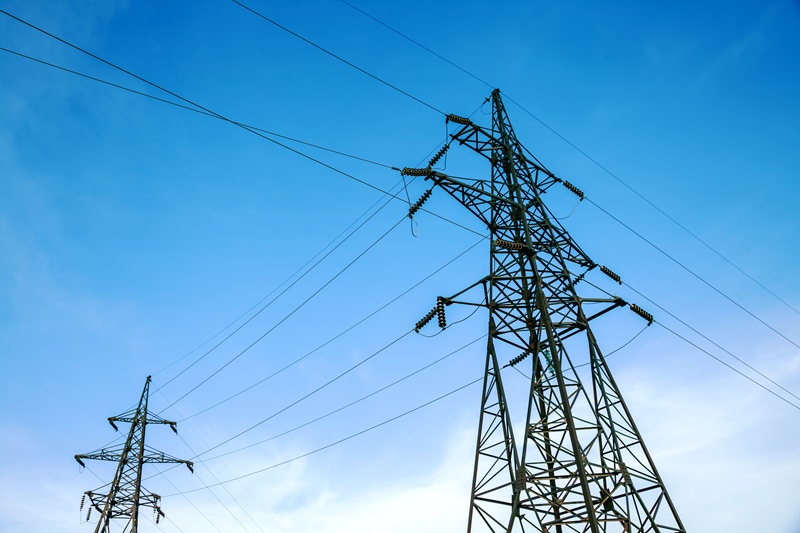Electricity is an integral part of our lives – we need it whether we’re at work, walking down the street or doing domestic chores. As the electricity bill we receive each month has a direct impact on our monthly budget, it is only natural that people want to know exactly what they are paying for when they use electricity.
The amount you see on your monthly electricity bill is made up of three main components: the cost of electricity, the network charge and national taxes such as the renewable energy tax and electricity excise tax.
The first of these, the electricity cost, depends on your electricity package and your monthly electricity consumption. The price of electricity includes a margin to cover the risks and operating costs of the electricity trader, a monthly fee to maintain information systems and develop web applications, among other things, and VAT, a national tax on the consumption of all products and services.
The network service fee is paid to the network provider for delivering the electricity to your home. This fee covers the costs of maintaining and developing the necessary infrastructure. The price of the network service cannot be influenced by the customer and is agreed annually by the Competition Authority. Elektrilevi is the largest network provider in Estonia.
The renewable energy tax is a charge set by the state to support the production of clean energy in Estonia. It is calculated and published annually by the transmission system operator Elering. The electricity excise tax is a national tax that finances environmental benefits.
The total cost of both the network service fee and the national taxes depends on how much electricity you have consumed.
Estonia operates on the Nord Pool electricity market
Since 2013, the market price of electricity has been set on the Nordic and Baltic Nord Pool Spot power exchange, which includes Norway, Sweden, Finland, Denmark, Latvia and Lithuania, along with Estonia. Each country has at least one pricing area, which in turn is connected to other surrounding pricing areas (see dark blue lines on the map).

As transmission capacities between countries are limited, electricity prices may vary from region to region. The price is also affected by the production of renewable energy – the more green energy a region produces, the cheaper the price of electricity there.
Similarly, the market price of electricity is created by the interaction of various aspects, which in turn is the reason behind price variability. The price on the stock exchange can be affected by:
- the availability of and demand for production capacity;
- the price of important production inputs (for example, CO2 quota, coal, gas);
- the maintenance and emergency work of power plants or submarine cables;
- the general economic climate as well as the weather.
A high exchange price occurs in a situation where several unfavourable events occur at the same time and the demand for electricity in the region exceeds the supply. Estonia makes up a very small part of Nord Pool’s electricity market. This means that if, for example, a power plant or cable fails in another country, we are also directly affected.
How is the price of electricity set on the Nord Pool power exchange?
The price of electricity on the Nord Pool exchange is formed as a result of demand and supply. The following four steps explain this.
- Every day, electricity suppliers submit an order to the stock exchange for how much electricity their customers need for the next day. The amount of energy produced becomes clear.
- Renewable and nuclear units will be the first to enter the market to meet demand. Their production is at a lower price because energy sources are cheap and carbon dioxide is not produced during production. If renewable energy is sufficient to cover consumption, the price of electricity on the market is favourable.
- If renewable sources do not cover the demand, oil shale, coal and gas power plants enter the market. Their electricity is more expensive due to both the fuel and the CO₂ emission fee.
- The electricity exchange price is determined by the last tenderer. If, for example, the gas power plant, whose price is higher, is the last to cover the market demand, then it determines the price of electricity for that particular hour.
If you want more information about the price formation or if you have any other questions, we will be happy to help you. Contact us and write to teenindus@enefit.ee, call 777 4040 or leave a request for a consultation on our website.
In addition, read the article where we explain why you have to pay a contract termination fee for some electricity packages: Reader asks: ‘Why do you have to pay a contract termination fee for some electricity packages?’ – Energy Wisdom Blog – Enefit


